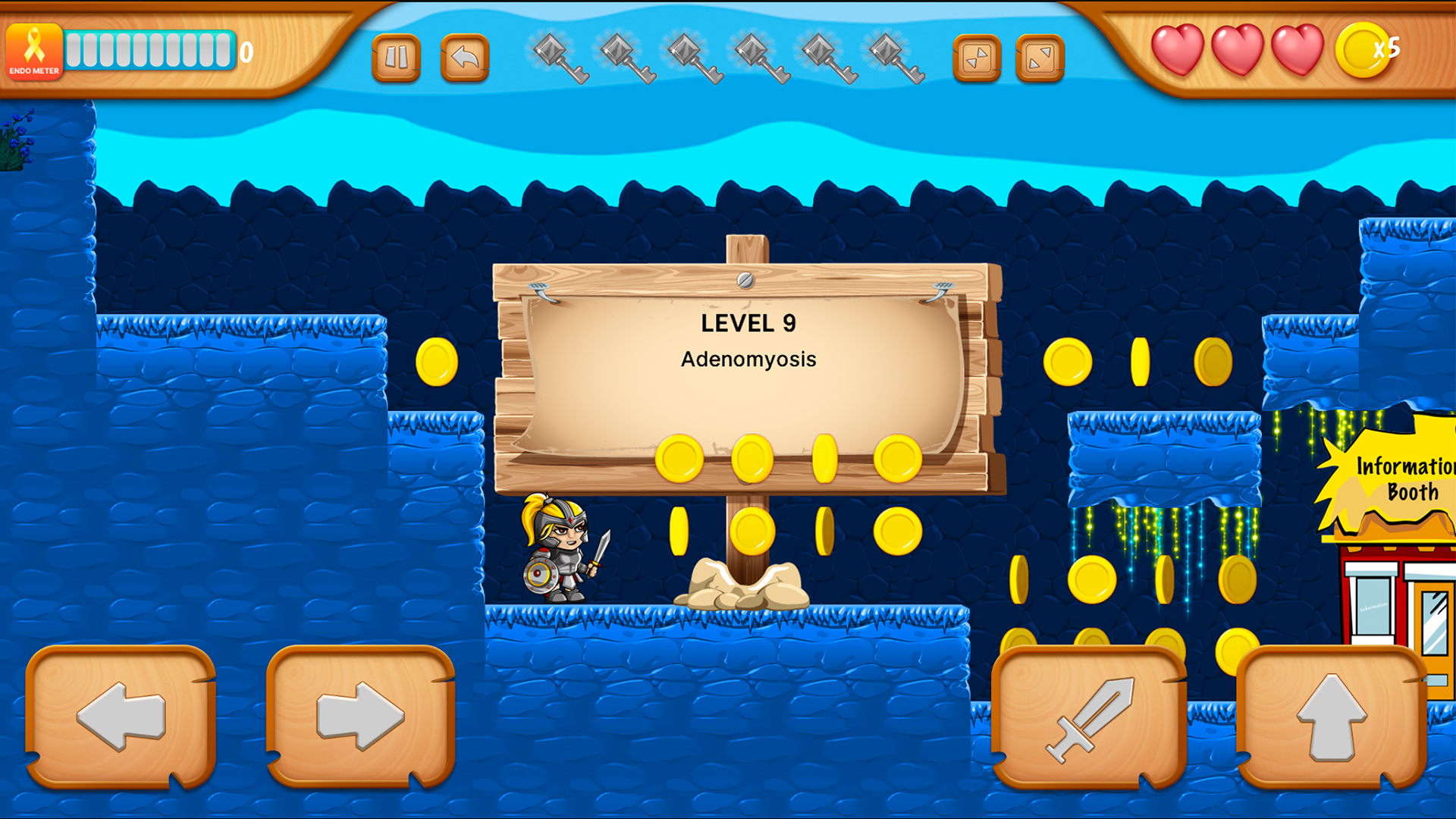
Level 9: Adenomyosis
Information Booth 1
What is Adenomyosis?
Adenomyosis is a medical condition that occurs when the tissue that normally lines the inside of the uterus (the endometrium) begins to grow into the muscular wall of the uterus (the myometrium).
This displacement and invasion of endometrial tissue into the muscular uterine wall can cause the uterus to become enlarged, swollen, and tender.
Information Booth 2
Characteristics of Adenomysosis
Key characteristics of adenomyosis include:
- Painful Menstrual Periods: Women with adenomyosis often experience heavy or prolonged menstrual bleeding, severe cramping, and pain during menstruation.
- Enlarged Uterus: The condition can lead to an enlarged and tender uterus, sometimes causing discomfort in the lower abdomen.
- Pelvic Discomfort: Some women may experience chronic pelvic pain or pressure, especially during menstruation.
- Associated Symptoms: Other symptoms may include bloating, an increase in menstrual cramps over time, and in some cases, infertility.
Information Booth 3
Diagnosing Adenomyosis
Diagnosing adenomyosis usually involves a combination of medical history, physical examination, imaging studies (such as ultrasound, transvaginal ultrasound, and/or MRI), and sometimes a biopsy (sampling of tissue) to confirm the presence of adenomyosis cells.
Information Booth 4
Treatments for Adenomyosis
Treatment for adenomyosis depends on the severity of symptoms and the individual’s reproductive plans.
Options range from medication to manage pain and hormonal therapies, to surgical treatments like hysterectomy (removal of the uterus). Adenomyosis can also affect fertility, so early diagnosis and management are important for those planning a pregnancy.
Adenomyosis can affect women of all ages, but is most commonly seen in women who have had children or those in their late 30s or 40s.
While it’s a non-life-threatening condition, it can significantly impact a person’s quality of life, and seeking medical advice is crucial for appropriate management.
Information Booth 5
Symptoms and treatment
Adenomyosis often causes heavy and painful menstrual periods, and hysterectomy is considered a definitive cure for the condition. Here’s an elaboration:
Heavy and Painful Periods: Adenomyosis is known to cause heavy menstrual bleeding (menorrhagia) and severe, debilitating menstrual cramps (dysmenorrhea).
This increased menstrual flow and intense pain are key symptoms experienced by individuals with adenomyosis, leading to significant discomfort and sometimes impacting daily activities.
Hysterectomy as a Cure: In cases where adenomyosis symptoms are severe and negatively impact a person’s quality of life, hysterectomy, the surgical removal of the uterus, is often considered a definitive cure.
Removing the uterus eliminates the source of the condition and typically resolves the symptoms associated with adenomyosis.
However, this is a major surgery that is usually considered when other treatment options have been ineffective or when an individual does not desire future pregnancies.
Information Booth 6
Get a second opinion
Get a second opinion: If you are unsure about a surgeon’s recommendation or treatment plan, consider getting a second opinion from another experienced Endometriosis excision surgeon who specializes in adenomyosis as well.
A second opinion can help ensure that you are making an informed decision about your care.
